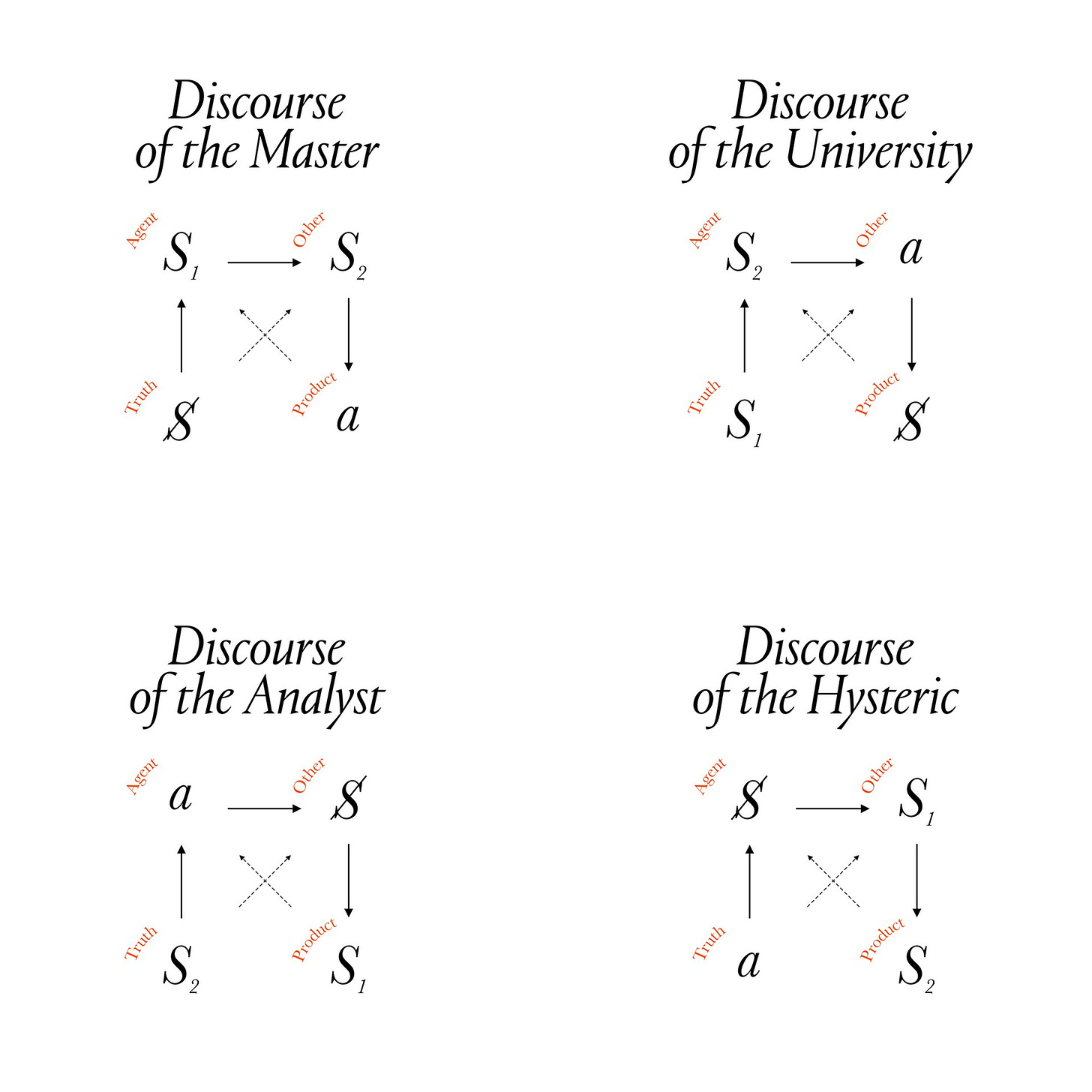What is S2 in the four discourses?
Last week I covered S1, and this week I’ll move onto S2. This will leave $ and a, which future editions of the newsletter will get into.

REVIEW:
S1 = The master signifier which is an empty signifier. The master signifier is the signifier that “starts the process of signification.” What this means is that S1 is the signifier in a system all the other signifiers in the system point to or depend upon. To put this a different way S1 is the signifier that has the “ultimate authority” and all the other signifiers in the system derive their authority from the authority of S1. What’s interesting is that S1’s authority is an illusion, it is there because people believe it is there, but this authority is not real. The example I gave in my last newsletter was the Queen of England as S1 for the government (S2) of the United Kingdom. The Queen is a figurehead who grants the government power. In reality, the Queen does not have any “real power” at all, the government and the people just act as if she did because it allows the rest of the system to work.
AND NOW S2:
S2 is the system of signification. The system of signification is a kind of like a network, a bunch of signifiers (units or nodes) that are linked in a systematic way, which allows them to work together in concert. When these signifiers (units or nodes) work together in concert, they can accomplish much more than if they worked in isolation. The greater the number of signifiers (units or notes) in the system, the greater the density of the network (the more connections there are).
A SIMPLE SYSTEM:
Let’s start by looking at a simple S2 system, which is not very complex, and can’t be used to accomplish complex things: a set of measuring spoons. The S1 in this system would be 1. Based on this S1 of 1 the measuring cup system has a bunch of derivatives of 1, which we use to represent fixed quantities of things like flour, sugar, or whatever. The measuring cup S2 is a simple system, and it is good for baking a cake, but it is rubbish for understanding interconnected systems of global economic trade.
MORE COMPLEX SYSTEMS:
For an example of a complex S2 system lets go back to the Example of the government of the United Kingdom, the Quen is S1 the government/legal system of the United Kingdom is S2. This S2 has units like a Parlement, Prime Minister (PM), Members of Parlament (MP), The House of Lords, the House of Commons. It also has things like solicitors, barristers, judges, and courts. These units in S2 are linked together, and information and power flow through the network all the time. What is important to remember is that all of this depends on S1 being seen as the point in the system where power originates.
Another example of a system I wrote about in the S1 edition of CP was the legal system. In that example, S1 is the concept of “the law” as such. The S2 is all the laws, policies, lower courts, higher courts, supreme courts, lawyers, judges, etc. All of those notes that make up S2 are contingent on the S1, which is just a concept —the concept of “the law”. This S1 concept of “the law” is an empty signifier, it does not have any actual power on its own, however, the entire S2 legal system is dependent on this empty S1 master signifier to organize it and cohere it into the system that it is.
One thing I’m hoping to make clear in this edition of CP is how S1 is completely dependent on S2, and S2 is totally dependent on S1! They do not (and I would say can not) exist in isolation from one another. I want to make this as clear as I can because understanding how S1 and S2 need and support one another is necessary to understand the remaining two symbols that will make up the discourses.